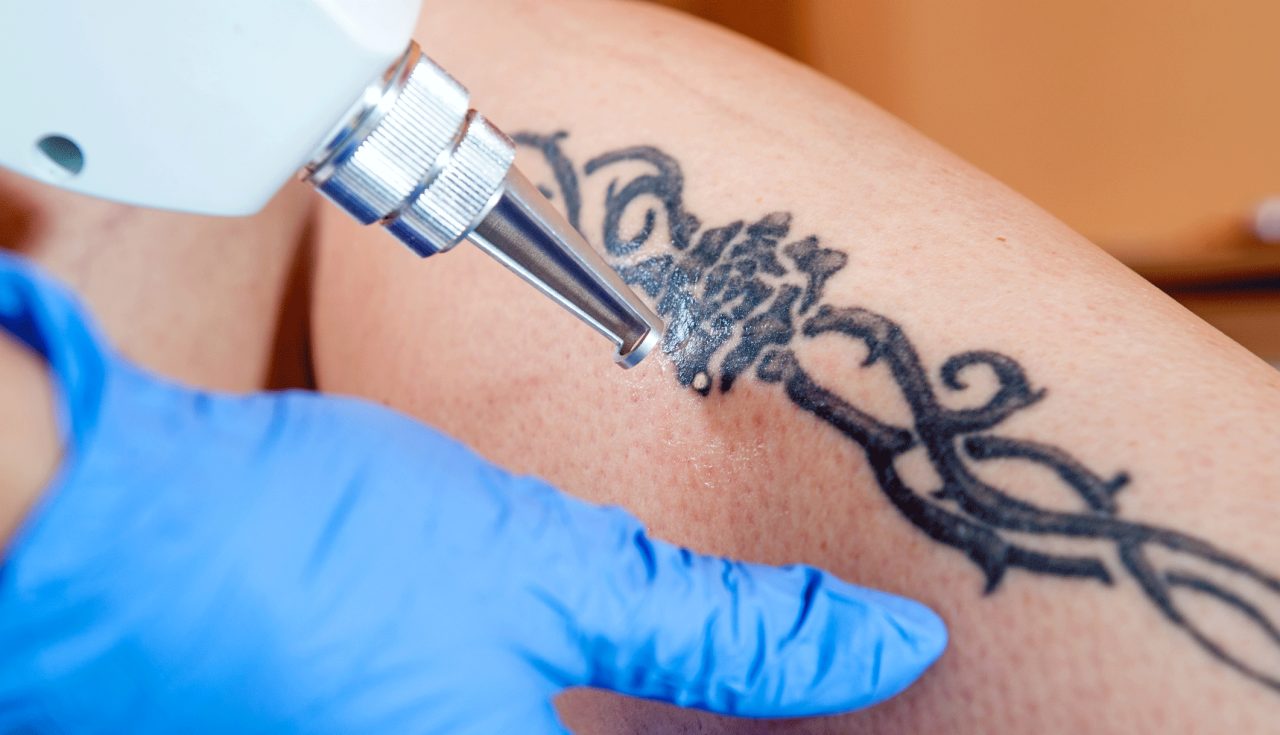What to Know About Tattoo Removal

Laser treatment can usually remove tattoos successfully, but there are risks, and aftercare is important. Here’s what to know about tattoo removal success.
Tattoos have become extremely common and popular over the past several decades, but they are nothing new. In fact, tattoos have been around for thousands of years, with designs used as declarations of love, religious beliefs, amulets, status symbols, and even types of punishment, according to the Smithsonian Institute.
Although tattoos have long been considered permanent body markings, you can have them removed, thanks to modern medical techniques.
YOU MIGHT ALSO LIKE: What Is Hepatitis B?
Many people are happy with their tattoos. But increasingly, people who have decided their tattoo was a mistake, or they’ve outgrown the sentiments (or lost interest) documented with a tattoo, are opting for removal. Some people have allergic reactions to the dye or develop infections at the tattoo site and need removal for medical reasons, too.
If you’re wondering what to know about tattoo removal, it’s crucial to realize the process involves far more than getting zapped with a laser a couple of times.
What to know about tattoo removal treatment
Before laser technology came on the scene, the methods of tattoo removal were dermabrasion (sanding skin down to deep levels with a high-speed rotary device) and surgery to cut out a tattoo. The procedures were not always successful.
Today, Q-switched lasers, which release powerful, single pulses of energy, are the primary type of laser used for tattoo removal. One variation of laser, known as a Q-switched Nd:YAG, sometimes treats people with darker skin that has an increased risk of permanent skin color changes from tattoo removal.
If you have laser treatment to remove a tattoo, an injection of a local anesthetic will numb your skin. Then your doctor will use a laser that emits a powerful pulse of energy to heat and break up the tattoo ink. Multicolored tattoos sometimes need treatment with different lasers and wavelengths, the American Osteopathic College of Dermatology explains.
Complete laser tattoo removal requires several treatments spaced many weeks apart. Treating more frequently than that increases the risk of adverse side effects and doesn’t necessarily cause the tattoo to disappear sooner.
Seek an experienced doctor for tattoo removal
Modern laser technology can remove tattoos more safely, effectively, and completely, with fewer treatments than ever before. But you should seek a qualified tattoo removal medical expert.
“For the best results and to reduce your risk of serious side effects, such as scarring, burns, and other wounds, it’s important to make sure the person treating you is a physician who is extremely skilled in using lasers and has in-depth knowledge of the skin,” says dermatologist Marie Leger, MD, PhD. “After that, it’s also important to properly care for the treated skin between sessions, as your skin needs time to heal and flush out the ink.”
Leger offers these tips for caring for your skin after each tattoo removal treatment:
- Wash the area twice a day with water and a gentle cleanser. To keep your skin moist so it won’t become dry and scab, apply petroleum jelly to the area with a clean cotton swab. To prevent infection, keep the treated area covered with a dressing until your skin heals.
- Avoid exposing treated skin to the sun. Tattoo removal leaves your skin more susceptible to sun damage, which can result in color changes in your skin, so keep the treated area out of direct sunlight. Wear protective clothing (like a lightweight, long-sleeved shirt, pants, or a wide-brimmed hat) outdoors. After the treated skin heals, use a broad-spectrum sunscreen that contains zinc oxide, which deflects the sun’s harmful ultraviolet rays, with an SPF of 30 or higher.
- Don’t pick at flaking, peeling, blisters or scabs that form. Keep your hands away from the area where the tattoo was removed, to avoid infection.
- Concerned about what’s normal after tattoo removal? When to call your doctor. After a laser tattoo removal treatment, it’s normal to experience some redness, swelling, and blistering as your skin heals. If you notice signs of an infection, including increasing redness, swelling and pain, or pus, call your dermatologist right away.
Be patient and follow your doctor’s instructions
Although complications are not common if an experienced doctor treats you, unwanted side effects sometimes occur. They include the possibility of skin discoloration, such as hypopigmentation (white spots, more common in darker skin) or hyperpigmentation (dark spots). Very rarely, scars occur if patients don't care for the treated area properly.
Patience is important. Your tattoo will not disappear immediately after your initial treatment.
“Tattoo removal requires many treatments, with weeks between sessions,” Leger emphasizes. “For the best results, follow your dermatologist’s instructions for at-home care, and keep all of your appointments for laser tattoo removal, as each treatment removes more ink.”
Updated:
July 12, 2023
Reviewed By:
Janet O’Dell